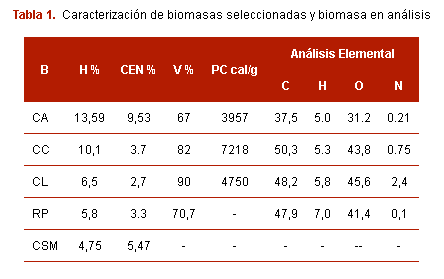Potencialidades de la cáscara de semilla de moringa como posible material absorbente
Contenido principal del artículo
Resumen
En Cuba una de las principales fuentes de energía renovable es la biomasa y el mayor potencial energético lo tiene la biomasa cañera, pero existen otras fuentes que tienen importancia en el orden local o que su aprovechamiento resulta conveniente desde el punto de vista medioambiental, no solo como recurso energético. La semilla de Moringa oleífera que se emplea para la producción de aceites produce un volumen importante de cáscara que constituye biomasa en este cultivo; sin embargo en Cuba no se utiliza este residuo y tampoco se ha estudiado en la aplicación del carbón activado. En el presente trabajo se propone investigar sobre el potencial de la cáscara de semilla de Moringa oleífera, con el propósito de emplearla, lo que constituye un aspecto positivo en la actualidad cubana. El objetivo del proyecto está dirigido a identificar el tipo de pirólisis y las condiciones de ensayo más convenientes para el tratamiento de la cáscara de semilla de Moringa como posible carbón activado. Se realiza análisis documental mediante artículos originales y de revisión, se consideran biomasas procedentes del arroz, almendra, pino, coco y café fundamentalmente. En actividad práctica las biomasas han sido evaluadas, lo que permite concluir que la cáscara de semilla de Moringa oleífera, puede ser una alternativa para obtener carbón activado. Se propone iniciar estudios al caracterizar la cáscara de semilla de Moringa oleífera, proponer su carbonización por medio de proceso termoquímico como la pirólisis lenta. Se plantean los parámetros como temperatura, presión, cenizas, humedad, carbono y poder calórico para la realización del proceso de pirólisis.
Descargas
Detalles del artículo
Citas
Basile, L. et al., (2014) Influence of pressure on the heat of biomass pyrolysis Fuel, 137: pp. 277-284.
Basterra, L.E. et al. (2020). Actualización del balance de biomasa con fines energéticos en la Argentina. http://www.probiomasa.gob.ar/_pdf/19-Actualizacion-balance-biomasa.pdf.
Biswas, B. et al., (2018). Pyrolysis of agricultural biomass residues: Comparative study of corn cob, wheat straw, rice straw and rice husk. Bioresource technology, 237: pp. 57-63.
Bustamante García, V. et al. (2016). Química de la biomasa vegetal y su efecto en el rendimiento durante la torrefacción, Revista Mexicana de Ciencias Forestales, 38 (7), pp. 5-23.
Goche, J.R. et al. (2023). Propiedades físicas y biomasa fustal de Pinus engelmannii proveniente de una plantación en Durango. Ecosistemas y Recursos Agropecuarios, 1(10). https://doi.org/10.19136/era.a10n1.3004
Gómez, N. et al., (2018). Slow pyrolysis of relevant biomasses in the Mediterranean basin. Part 1. Effect of temperature on process performance on a pilot scale. Journal of cleaner production, 120: pp. 181-190.
Herrera, J.A.L.C., (2020). Energía de la biomasa y el agua, Editorial Elearning, SL.
Isahak, W.N.R.W. et al., (2012). A review on bio-oil production from biomass by using pyrolysis method. Renewable and sustainable energy reviews, 16(8): pp. 5910-5923.
Klug, M. (2012). Pirólisis, un proceso para derretir la biomasa. Revista de Química, 26 (1-2), pp. 37-40. https://revistas.pucp.edu.pe/index.php/quimica/article/download/5547/5543/
Medina Pinos, J.G. (2020). Caracterización de biomasa residual de la poda de árboles del cantón Cuenca mediante el análisis TGA, elemental y poder calórico para la producción de Biochar. Universidad Católica de Cuenca. En: https://dspace.ucacue.edu.ec/. Consultado en julio de 2023.
Sánchez, Y. et al. (2019). Evaluación de las condiciones experimentales básicas para la producción de biomasa a partir de la microalga Chlorella vulgaris. Afinidad, 76 (585).
Serrano, C.F. (2018). Caracterización físico-química del aceite de semillas de Moringa oleífera para su uso con fines energéticos, Centros de Estudio de Tecnologías Energéticas Renovables, Ceter, Universidad Tecnológica de La Habana José Antonio Echeverría.
Singh, A.K. et al. (2020). Phytochemical, nutraceutical and pharmacological attributes of a functional crop Moringa oleífera Lam: An overview. South African Journal of Botany,129: pp. 209-220.
Tumuluru, J.S. et al. (2012). Formulation, pretreatment, and densification options to improve biomass specifications for co-firing high percentages with coal. Industrial Biotechnology, 8 (3), pp. 113-132.
Villalba Vidales, J.A. y Arzola de la Peña, N. (2015). Modelos matemáticos y experimentales sobre el secado de biomasa. Ingeniería Desarrollo 33(2): pp. 301-330.
Zheng, H. et al. (2013). Sorption of antibiotic sulfamethoxazole varies with biochars produced at different temperatures. Environmental Pollution, 181, págs. 60-67. http://dx.doi.org/10.1016/j.envpol.2013.05.056


